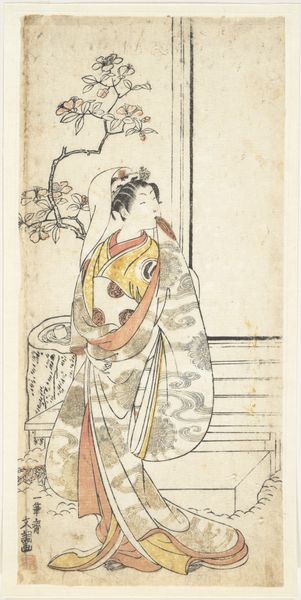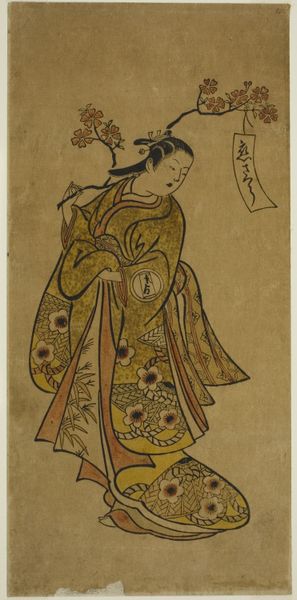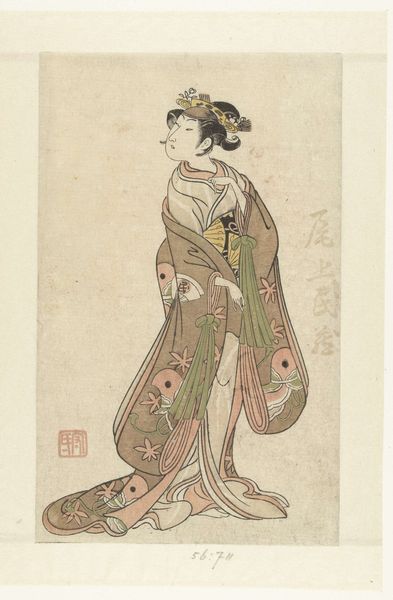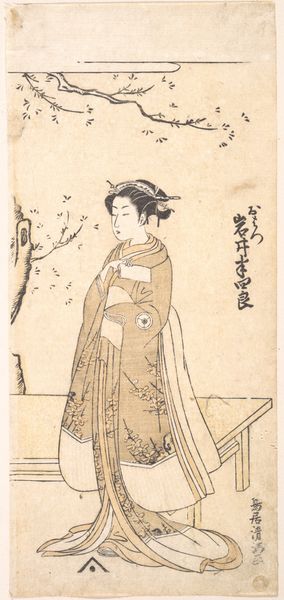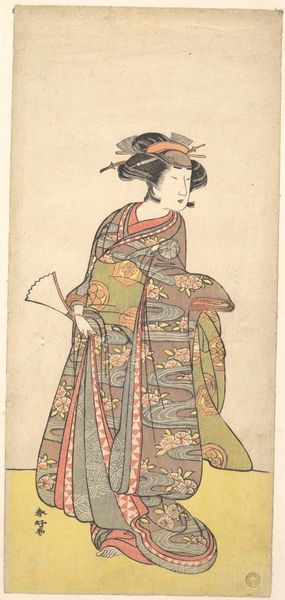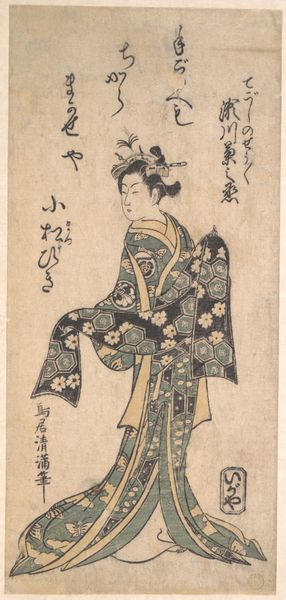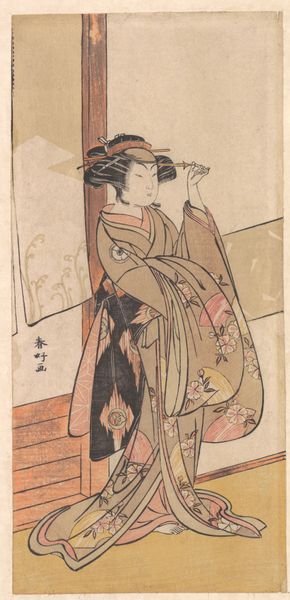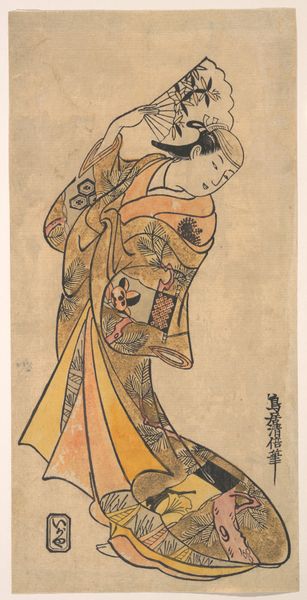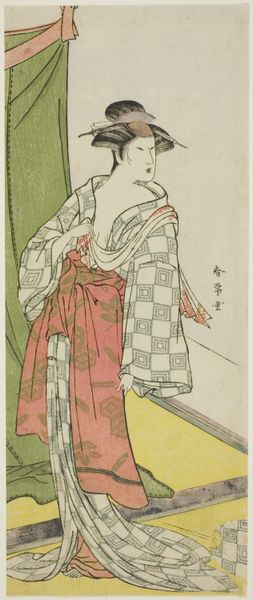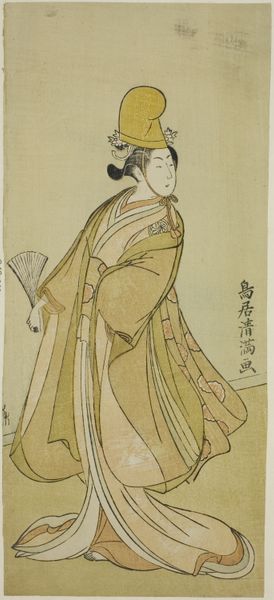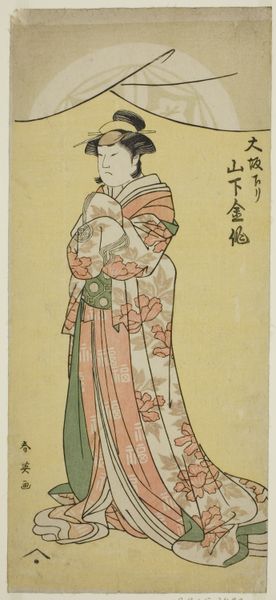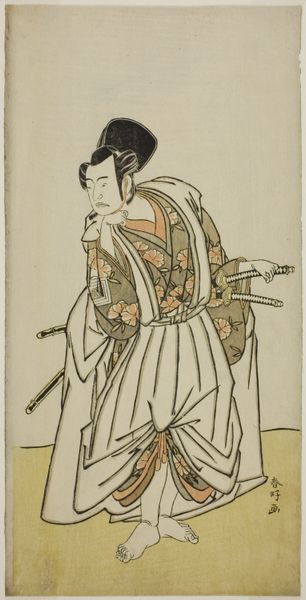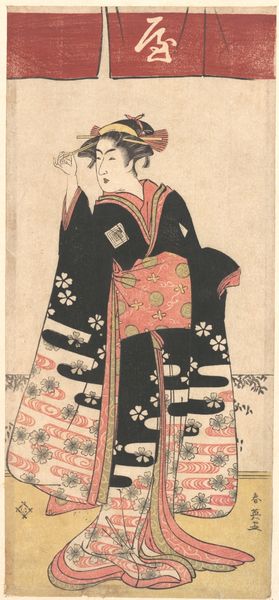
The Actor Yamashita Mangiku I as Kewaizaka no Shosho in the Play Nanakusa Yosooi Soga, Performed at the Nakamura Theater in the First Month, 1782 c. 1782
0:00
0:00
print, woodblock-print
#
portrait
# print
#
asian-art
#
ukiyo-e
#
japan
#
figuration
#
woodblock-print
Dimensions: 30.2 × 15 cm (11 7/8 × 5 7/8 in.)
Copyright: Public Domain
Editor: This woodblock print by Katsukawa Shunshō, circa 1782, presents the actor Yamashita Mangiku I. There’s such exquisite detail in the kimono, you can almost feel the silk. What aspects of its creation really stand out to you? Curator: I’m immediately drawn to the labor involved in the Ukiyo-e tradition. Think about the collaborative effort—the artist's design, the block carver’s skill in translating that design, and then the printer layering the colors. Editor: It's amazing to think about that kind of teamwork. Curator: And the materials themselves! The paper, likely made from kozo fibers, the specific wood chosen for its grain, the inks derived from minerals and plants… each choice informs the final product and speaks to a whole network of resources and craftspeople. Consider how access to these materials may have shaped the kinds of images made and who got to make them. What does the print tell you about social stratification? Editor: It is fascinating how understanding the labor and materiality really pulls apart the supposed divide between "high" art and the skills involved. Curator: Exactly. It prompts us to consider how the cultural value and artistic intention are always intertwined with the economic realities of production. Editor: That’s a new perspective for me. Looking at art through the lens of production opens up so much more than just aesthetics. I see how the work reflects so many human and material processes. Curator: Indeed, by considering all these factors, we develop a deeper understanding.
Comments
No comments
Be the first to comment and join the conversation on the ultimate creative platform.
